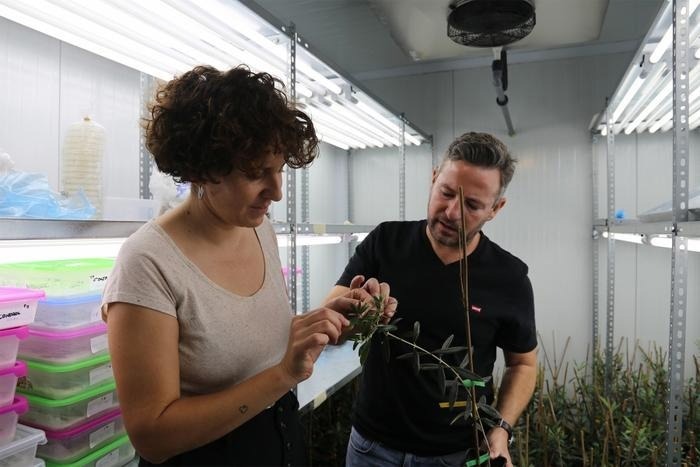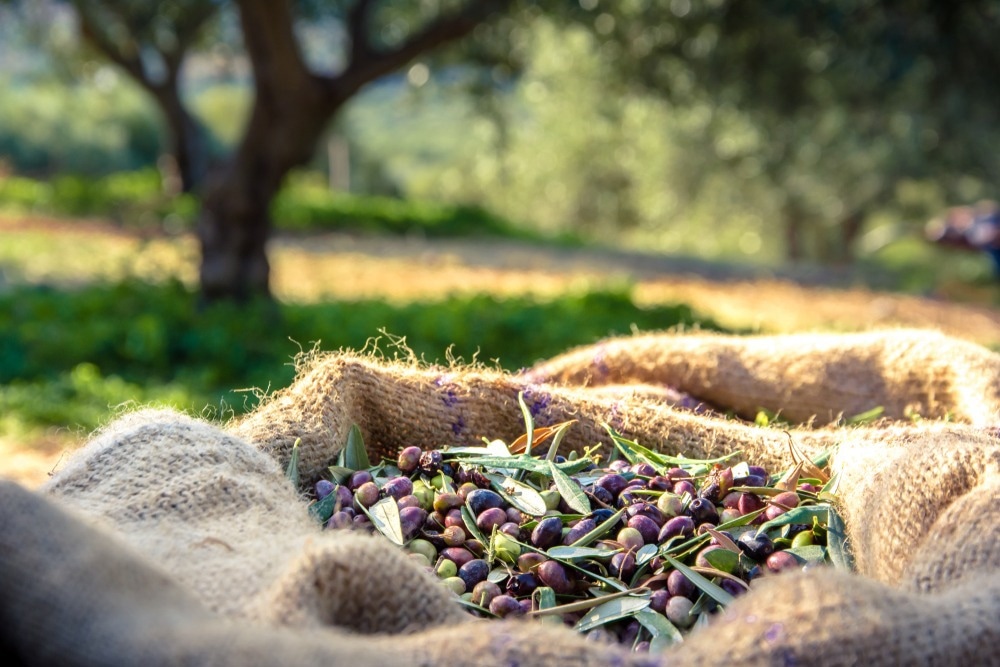Reviewed by Danielle Ellis, B.Sc.Jun 7 2023
A study from the Department of Agronomy at the UCO reveals that pathogens, once established, are difficult to dislodge, even by more competitive pathogens, after evaluating the interactions between the main species of Colletotrichum in Spain and Portugal.
 Researchers who carried out the study. Image Credit: University of Córdoba
Researchers who carried out the study. Image Credit: University of Córdoba
Olive anthracnose is also known as “soapy olive,” referring to the appearance of infected fruit that rots. It is the most common disease affecting olive trees, reducing harvests and negatively impacting oil quality, resulting in huge economic losses.
Different organisms of the genus Colletotrichum produce olive anthracnose (to date, 18 species of this fungus have been identified as causal agents of the disease). There is a dominating Colletotrichum species and many minor species in each olive-growing zone.
In Spain, for instance, the main species is C. godetiae, which impacts the sensitive variety “Hojiblanca,” which is widespread; in Portugal, C. nymphaeae stands out, damaging the “Galega Vulgar” cultivar, which is predominant. The question is, what competitive interactions cause some species to dominate certain regions while others do not? Do they “specialize” in a specific cultivar?

Image Credit: Georgios Tsichlis/Shutterstock.com
In search of answers, a team from the University of Cordoba’s María de Maeztu Unit of Excellence, Department of Agronomy (DAUCO), investigated the relationships between these two Colletotrichum species that cause anthracnose, to better understand their behavior and have more tools to combat the disease.
We carried out tests of isolates in Petri dishes with a mixture of spores of both species, testing in a medium enriched in carbon, and another that was poorer in it, to see which species dominated over the other, and if it had to do with the medium.”
María Teresa García, Study First Author and Researcher, University of Cordoba
C. godetiae displaced C. nymphaeae in all experiments, even though the percentage of spores in the initial inoculation was only 5% of C. godetiae versus 95% of C. nymphaeae. That is, despite a spore quantity deficit, this species managed to displace the other.
Continuing the trials, they inoculated olives from two susceptible cultivars (Hojiblanca, a typical variety of Andalusia, and Galega Vulgar, a dominant variety in Portugal), where the pattern was repeated: C. godetiae demonstrated a greater competitive capacity and partially displaced the species C. nymphaeae. These findings happened in both cultivars, ruling out the possibility that each was specialized in impacting only one.
We were surprised by these results, since it is logical that there would be a specialization in a region’s majority cultivar, or that there would be some characteristic allowing this fungus to dominate in Spain, with the other one on the margins, and the other way around in Portugal.”
Juan Moral, Study Coordinator, University of Cordoba
The findings of the relationship analysis between the two species, both in Petri dishes and in fruit, demonstrate that C. godetiae is far more competitive than the other species, regardless of cultivar.
Furthermore, this species proved far more resistant to copper, which is the main fungicide used in both countries’ olive orchards. So, how come the most competitive species is not really the dominant one in a nearby region like Portugal?
It is difficult to explain why C. godetiae no displaces C. nymphaeae in Portugal, according to the classical theory of competitive ecology. However, it could also be due to what is known in ecology as the ‘priority effect’: that is, when a species is established in a niche and becomes strong it is very difficult to displace it.”
Juan Moral, Study Coordinator, University of Cordoba
Other questions raised by the researchers include whether this transformation is occurring or whether other factors (such as the ability to impact adventitious plants) are influencing it.
This analysis obtains an efficient protocol to simulate cycles of interaction between Colletotrichum species not only in olives but also in other fruits, in addition to a more thorough understanding of the relationships between species, which will help know which majority populations are displacing others and to issue better recommendations in the selection of fungicides.
Source:
Journal reference:
Garcia-Lopez, M. T., et al. (2023). Study of the competition between Colletotrichum godetiae and C. nymphaeae, two pathogenic species in olive. Scientific Reports. doi.org/10.1038/s41598-023-32585-6.